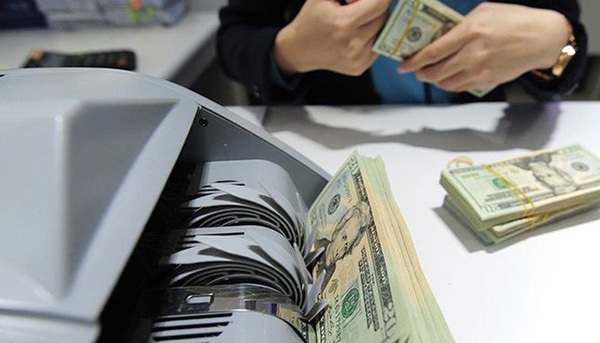 |
| Illustrative image. – Photo tapchitaichinh.vn |
According to the World Bank, remittances inflow to Vietnam in 2021 as a whole will remain persistent compared to 2020 despite the ongoing pandemic.
Last year, the number of overseas remittances to Vietnam in 2020 was $17.2 billion, making Vietnam one of the top 10 beneficiaries among low and middle-income countries.
Nguyen Hoang Minh, deputy director of the State Bank of Vietnam Branch in Ho Chi Minh City, said in the first seven months of this year, remittances pouring into the city reached $3.7 billion, up more than 19 per cent over the same period last year.
“Specifically, remittances mainly focused on production and business. This not only contributes to supporting the city’s economic development but also helps stabilise the foreign currency reserves across the country in general,” Minh said. “Undoubtedly, remittance inflow plays a crucial lifeline to the vulnerable.”
Remittances to the city are expected to at least double over the second half of the year and possibly surpass the contribution rate of more than one-third of the country’s total remittances in the year.
Back in May, the World Bank upgraded its forecast for remittances to low- and middle-income countries for 2021, predicting flows of $553 billion over the course of the year, reflecting a growth rate of 2.6 per cent. The strong flow of remittances underscores their importance to many emerging market economies.
Le Hoang Chau, chairman of the Ho Chi Minh City Real Estate Association, stated the high inflows of cash that have caused real estate prices to reach record highs also includes remittances.
Agribank’s Remittance and Payment Service Centre also expects remittance inflows to Vietnam to remain stable. A large share of Agribank customers are workers who are now abroad in markets including Japan, South Korea, Taiwan, and the US.
The World Bank said that with remittances expected to increase by another 2.2 per cent to $565 billion in 2022, there are concerted efforts underway to reduce transfer costs.
A handful of banking and payment services have jumped onto the remittance transferring bandwagon. Last week, Visa partnered up with Sacombank to deploy an inbound remittance transfer service through Visa Direct. Vietnamese people who are also Sacombank Visa debit cardholders can use the service to transfer money to any other Visa card issued in 44 countries and territories. It is applicable to the nine most-traded foreign currencies worldwide.
Sacombank is the first local lender to implement this form of money transfer in the Vietnamese market based on Visa’s secure technical platform, and meets the criteria of a fast and convenient service.
The government is now gradually reopening the economy, so domestic brokerage SSI expects the trade balance to improve at the end of the year and remittance flows usually increase sharply as Lunar New Year approaches. Supply and demand of foreign currency in the market will be relatively balanced and help the USD/VND exchange rate maintain a stable state, SSI explained.
On the other hand, despite the disappointing performance in Q3 2021 and with chances of a recovery in Q4 2021, the State Bank of Vietnam (SBV) is likely to keep its policy steady and leave the refinancing rate at 4 per cent and rediscounting rate at 2.5 per cent, both record lows.
According to UOB Vietnam, one key consideration for the SBV is the US Federal Reserve’s policy change ahead, which could have implications on emerging markets like Vietnam as capital flows react to the policy shift.
“While we see low risks of disruptive or disorderly capital outflows from emerging markets, this is likely to be one key area that central banks watch carefully,” UOB Vietnam noted last week. “Our scenario is for the Fed to begin the tapering of its bond purchases before end-2021 and complete the process by mid-2022, thereafter interest rate hike to start by end-2022.”
For the VND, the unit strengthened modestly against the USD in Q3. This came as Vietnam reached an agreement with the US Treasury in July to refrain from deliberately weakening the VND to gain an export advantage.
The outlier strength of the VND also comes in a period where most of its Asian peers are retreating against the USD as the Fed’s upcoming normalisation plans spurred a recovery in the USD.
More importantly, UOB Vietnam said, a strong VND is also increasingly at odds with the uncertain and weak economic outlook inflicted by the virus outbreak. It predicted strong support at 22,700 in the USD/VND rate, where further sustained gains of the VND are unlikely. Overall, the bank reiterates an upward trajectory in the USD/VND and updated its forecasts to VND22,900 in Q4 of 2021, rising up to VND23,200 by the third quarter of 2022.
Source: VIR

Vietnam among top 10 remittance recipients in 2020 with US$17.2 billion
This was a fourth consecutive year that Vietnam remains in the top 10 in terms of remittance.